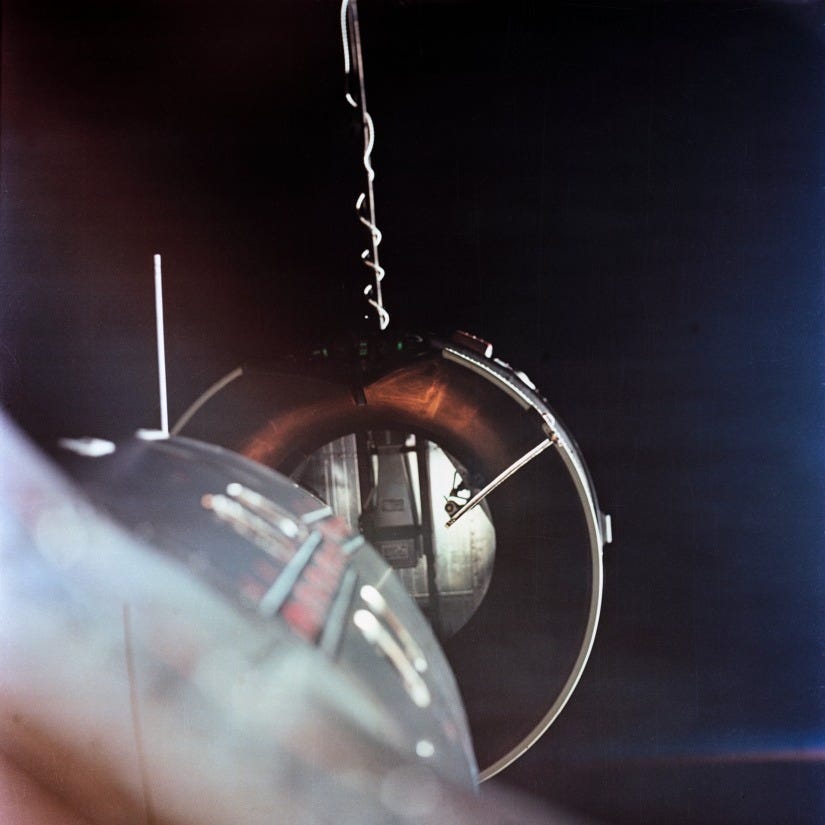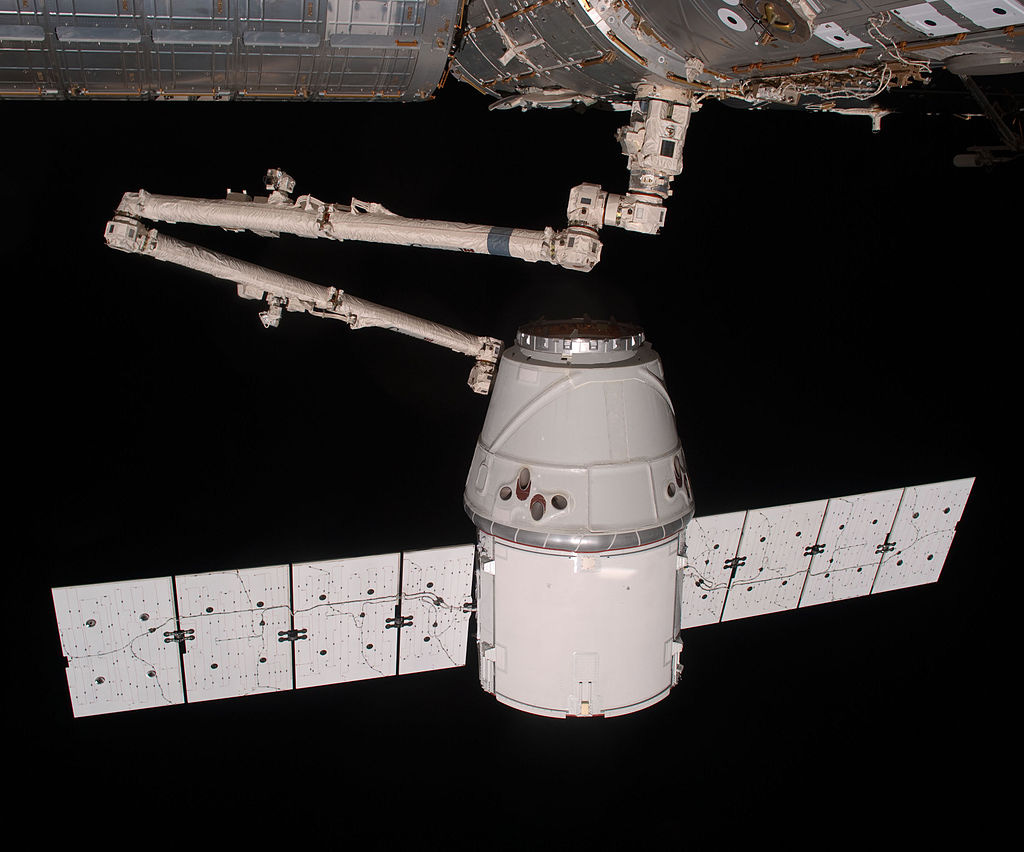Docking in Space
The Gateway to Advanced Space Exploration
Recent news article:
The Indian Space Research Organisation (ISRO) is set to launch the Space Docking Experiment (SpaDEX) on December 30, 2024, using the PSLV-C60 rocket to deploy two satellites, Chaser and Target, into a 470 km orbit. This mission aims to demonstrate in-space docking technology, a critical capability for future endeavors such as India's space station and lunar missions.
Inspired from the above, let’s learn about space docking.
What is Space Docking?
Space docking is the process by which two spacecraft come together and physically connect in orbit. This intricate operation involves precision navigation, alignment, and synchronization to ensure the safe and seamless joining of vehicles. Docking is essential for various purposes, including the transfer of crew and cargo, refueling, or assembling modular space stations. A successful docking maneuver demands advanced engineering, robust systems, and highly skilled astronauts or autonomous systems to execute.

The Need for Docking in Space Missions
Docking is a cornerstone of modern space exploration for several reasons:
Space Station Operations: Docking allows spacecraft to deliver supplies, scientific equipment, and crew to space stations like the International Space Station (ISS), enabling long-term habitation and research.
Mission Extension: Refueling and maintenance facilitated by docking can prolong the operational life of satellites or interplanetary probes.
Deep Space Exploration: For ambitious missions, such as traveling to Mars, docking is crucial for assembling large spacecraft or transferring crew to landers.
Modular Construction: Docking enables the assembly of structures in space, reducing the need to launch large, unwieldy spacecraft from Earth.
By enabling modularity and reusability, docking serves as a stepping stone for achieving sustainable spaceflight, lowering costs, and expanding humanity’s reach into space.
Technologies Involved in Space Docking
Space docking relies on a sophisticated blend of engineering, computing, and precision control systems. Here are the key technologies that make docking possible:
1. Guidance, Navigation, and Control (GNC) Systems
The GNC system ensures the spacecraft accurately approaches and aligns with the target docking port.
Sensors: Radar, lidar (light detection and ranging), and cameras detect the distance, speed, and angle of approach.
Inertial Measurement Units (IMUs): These devices track changes in the spacecraft’s velocity and orientation.
Thrusters: Small, precise thrusters adjust the spacecraft’s position and orientation to ensure alignment during docking.
Algorithms: Advanced algorithms process sensor data and generate commands for the spacecraft's control systems.
2. Docking Mechanisms
Docking mechanisms are physical systems designed to create a secure and airtight connection between two spacecraft.
Docking Rings and Latches: These mechanical components physically lock the spacecraft together once aligned.
Androgynous Docking Ports: Modern designs, such as the NASA Docking System (NDS), are gender-neutral, allowing any spacecraft to dock with another equipped with a compatible port.
3. Autonomous Docking Systems
Modern spacecraft, like SpaceX's Crew Dragon, often employ fully autonomous docking systems (the video above shows SpaceX Crew-9 docking with the International Space Station on Sept. 29, 2024).
Machine Vision: Cameras and sensors guide the spacecraft to the docking port, using pattern recognition and markers.
Automated Decision-Making: The spacecraft's computer makes real-time adjustments without human intervention.
Redundancy: These systems include backup sensors and fail-safes to ensure reliability.
4. Robotic Arms

Used primarily in berthing operations (a docking alternative), robotic arms capture and secure spacecraft.
Example: The Canadarm2 aboard the International Space Station (ISS) assists in capturing cargo spacecraft like SpaceX's Dragon and Northrop Grumman's Cygnus.
Control: Astronauts or ground operators remotely control these robotic arms, often using visual and sensor feedback.
Types of Docking Methods
Docking methods vary depending on the mission requirements, spacecraft design, and operational goals. Here are the primary types:
1. Hard Docking
Description: This involves a rigid physical connection between spacecraft, using mechanical latches and clamps to secure the link.
Process:
The docking rings or probes from each spacecraft engage.
Alignment is finalized through a series of guide pins or alignment markers.
Latches are activated to lock the spacecraft in place.
Applications: Frequently used in crewed space missions, such as Soyuz or Crew Dragon docking with the ISS.
Advantages:
Secure and airtight connection.
Capable of transferring crew, cargo, and even fuel.
Challenges: Requires precise alignment and can be structurally demanding.
2. Soft Docking
Description: This is an initial, less rigid connection used to absorb shocks and align spacecraft before transitioning to hard docking.
Process:
Soft capture systems (e.g., magnets or shock absorbers) engage.
The connection stabilizes and aligns the spacecraft.
The hard docking mechanism is activated to finalize the connection.
Applications: Common in modern docking systems like NASA’s International Docking System Standard (IDSS).
Advantages:
Reduces stress on spacecraft structures.
Minimizes the risk of damage during the docking process.
3. Berthing
Description: In berthing, a robotic arm captures a spacecraft and maneuvers it into position for manual attachment.
Process:
The spacecraft approaches the station and holds at a safe distance.
A robotic arm, controlled by astronauts or ground teams, captures the spacecraft.
The arm positions the spacecraft at the docking port, where it is bolted into place.
Applications: Used for uncrewed cargo spacecraft like SpaceX’s Dragon and Northrop Grumman’s Cygnus.
Advantages:
Allows more flexible and precise positioning.
Useful for spacecraft without autonomous docking capabilities.
Challenges: Requires human oversight and introduces additional complexity.
Failures in Docking and Alternatives
Space docking is not without risks. Several historical incidents highlight the challenges:
Soyuz 10 (1971): A failed attempt to dock with the Soviet Salyut 1 station due to latch issues.
Progress M-34 (1997): A collision with the Mir space station caused damage due to navigation errors.
Gemini 9A (1966): An unsuccessful docking due to the failure of the target vehicle's docking adapter to deploy.
These failures emphasize the need for rigorous testing, redundancy in systems, and advanced training.
Alternatives to Docking:
Refueling in Orbit: Technologies like satellite servicing systems may reduce the need for docking in some cases.
Capture Mechanisms: Concepts such as net or harpoon-based capture could replace traditional docking for specific applications.
Space docking is a critical enabler of modern space exploration, allowing humans and machines to work together seamlessly in the harsh environment of space. The technologies and techniques developed for docking pave the way for more ambitious missions, from constructing interplanetary vehicles to creating sustainable colonies on other worlds. As we continue to push the boundaries of space exploration, mastering docking and its alternatives will be essential for unlocking humanity’s potential among the stars.
As this article marks the conclusion of our journey through 2024, our team extends warm wishes for a very Happy New Year 2025! We hope this year brings you new opportunities to delve deeper into the fascinating realms of space science and technology. If there are any topics that spark your curiosity, please share them with us—we’re eager to learn alongside you and bring those ideas to life through our future articles. Here’s to an inspiring and knowledge-filled year ahead! 🌟


